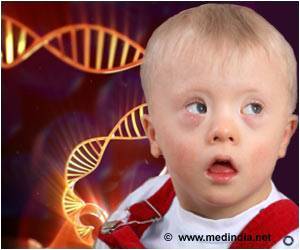New clues for the compulsive behavior and cognitive defects associated with a rare childhood neurological disease called Lesch-Nyhan Disease (LND) has been provided by research

The research is published on-line today in the PLoS ONE.
"This study is important because it opens completely new and unexpected areas of research into the genetic cause of compulsive and self-injurious behavior in Lesch-Nyhan disease," said principal investigator Theodore Friedmann, MD, professor of pediatrics at UCSD's Center for Neural Circuit and Behavior and Rady Children's Hospital-San Diego, a research and teaching affiliate of the UCSD School of Medicine.
"We think that the findings also have implications for far more common diseases related to the central nervous system, such as Alzheimer's and Parkinson's diseases, since defects similar or related to those that we've found are also seen in other neurodegenerative diseases – suggesting common mechanisms for some of the cognitive, behavioral and neurological defects in all these disorders," Friedmann added.
LND is an inherited disease caused by a deficiency of the HGPRT enzyme, produced by mutations in the HPRT gene located on the X chromosome, which causes a build-up of uric acid in all bodily fluids. The rare disorder, first identified by medical student Michael Lesch and his mentor, William L. Nyhan – currently a research professor of pediatrics at UC San Diego School of Medicine – is almost always seen in males. Complications usually appear in the first year of life, with neurological signs including poor muscle control and moderate cognitive deficiencies. A particularly disturbing aspect of the disease is uncontrollable and involuntary compulsive self-mutilating behaviors, characterized by lip and finger biting.
The late J. Edwin Seegmiller, MD, a pioneer in the field of human genetics and founding faculty member of the UCSD School of Medicine, first found that the HGPRT enzyme was missing in children with Lesch Nyhan Disease. Friedmann – who had studied in the Seegmiller lab at the National Institutes of Health and later joined UCSD's pediatric department – was the first to isolate and study the human HPRT gene.
HPRT is one of what is known as "housekeeping genes" that are expressed in most cells and usually thought to have simple functions in regulating metabolism and not necessarily in regulating complex processes in embryonic and neurological development. However, in 2009, Friedman's lab showed that HPRT plays an important role in affecting how transcription factor genes are expressed, and thus helps regulate important developmental pathways.
Analyzing microarray-based gene expression data, the researchers found that the abnormal purine metabolism found in patients with LND causes defects in these two pathways. Interactions between the Wnt and PS-1 signaling pathways also suggest that they may cooperate in other neurodegenerative diseases.
"Such similarities in cell function are not likely to be coincidental," said Friedmann. "Instead, they offer important clues to cognitive defects and open up new targets for therapies to treat these diseases."
Source-Eurekalert
 MEDINDIA
MEDINDIA



![Genetically Modified Food / Genetically Modified Organism [GMO] Genetically Modified Food / Genetically Modified Organism [GMO]](https://images.medindia.net/patientinfo/120_100/Genetically-Modified-Food.jpg)
 Email
Email






